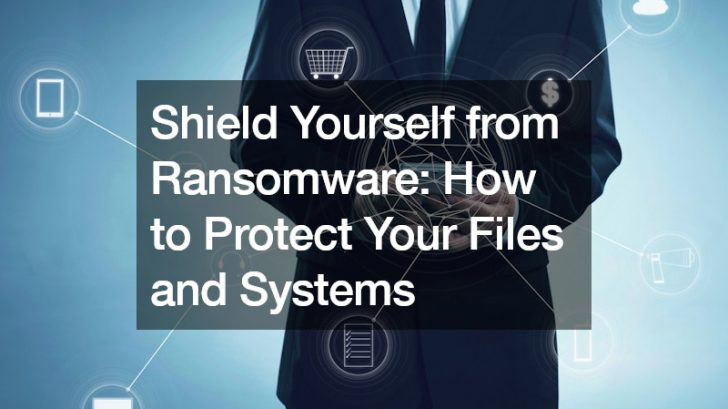Ransomware, a malicious software program, has become a growing threat in today’s digital world. It works by encrypting a victim’s files, essentially locking them away, and then demanding a ransom payment in exchange for the decryption key. This can be devastating for individuals who lose access to precious photos and documents, and crippling for businesses whose operations rely on critical data.
The good news is that you can take steps to protect yourself from ransomware attacks. By implementing strong security measures and maintaining good cyber hygiene habits, you can significantly reduce your risk of falling victim to this cybercrime.
Understanding Ransomware
Ransomware attacks come in various forms, but they all follow a similar pattern. Hackers gain access to a victim’s device or network through vulnerabilities like phishing emails, outdated software, or weak passwords. Once in, the malware encrypts the victim’s files, rendering them unusable. A message then appears on the screen demanding a ransom payment, often in cryptocurrency, to unlock the data.
Paying the ransom doesn’t guarantee the safe return of your files. In fact, security experts advise against it. There’s no guarantee that the hackers will provide a working decryption key, and you may end up funding further criminal activity.
Protecting Yourself from Ransomware
Here are some key strategies to fortify your defenses against ransomware attacks:
- Fortify Your Network: Your network is the first line of defense. Implement strong network policies that restrict access and monitor network activity for suspicious behavior. Regularly update your network devices like firewalls and routers with the latest security patches.
- Keep Software Up to Date: Outdated software often contains vulnerabilities that hackers can exploit. Make sure your operating system, applications, and firmware are updated with the latest security patches. Update them promptly whenever new updates become available.
- Embrace Strong Passwords: Weak passwords are easy for hackers to crack. Use complex, unique passwords for all your accounts. Consider a password manager to generate and store strong passwords securely. Enable two-factor authentication whenever possible for an extra layer of security.
- Embrace Backups: Backups are your safety net in case of a ransomware attack. Regularly back up your important data to an external drive or cloud storage. Ensure your backups are isolated from your main network to prevent them from being encrypted alongside your primary files. Test your backups periodically to ensure you can restore them successfully.
- Beware of Phishing Emails: Phishing emails are a common way for hackers to distribute ransomware. Be cautious of emails from unknown senders, especially those containing suspicious attachments or links. Don’t click on links or open attachments unless you’re absolutely sure of their legitimacy. Verify the sender’s email address and be wary of generic greetings or urgent language.
- Educate Yourself and Others: Knowledge is power. Educate yourself and those around you about ransomware threats and best practices for staying safe online. Cyber security awareness training can help employees identify phishing attempts, understand secure password practices, and recognize risky behaviors that could compromise the network.
- Consider Cyber Security Services: For businesses, consider engaging cyber security services to conduct vulnerability assessments and penetration testing. These services can identify weaknesses in your network and systems before hackers exploit them. Additionally, cyber security professionals can provide guidance on implementing robust security measures and best practices.
Beyond the Basics
While the steps outlined above provide a strong foundation for ransomware protection, consider these additional security measures:
- Disable Macros in Documents: Macros in documents, particularly Microsoft Office files, can be used to launch malicious code. Disable macros from untrusted sources to minimize risk.
- Use a Reputable Security Software: Consider using a reputable antivirus and anti-malware software program to add an extra layer of protection. These programs can detect and block known malware threats.
- Segment Your Network: Segmenting your network can limit the damage caused by a ransomware attack. If one area of your network becomes compromised, the malware may not be able to spread to other critical systems.
- Air Gap Sensitive Systems: Highly sensitive systems can be further protected by air gapping them. This means isolating them from the internet and other networked devices, making them more difficult for hackers to access remotely.
Conclusion
Ransomware is a significant threat, but it’s not an insurmountable one. By taking proactive steps to strengthen your defenses, backing up your data religiously, and staying informed about the latest threats, you can significantly reduce your risk of falling victim to this cybercrime. Remember, a layered approach to security is key. By implementing a combination of the strategies outlined above, you can create a shield that protects your valuable data from the ever-evolving threat of ransomware.
.







